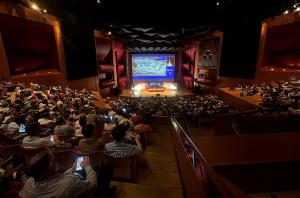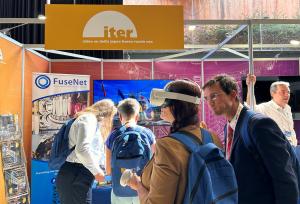How to accelerate fusion development?
At the 15th edition of the International Symposium on Fusion Nuclear Technology (Las Palmas, Gran Canaria, Spain), ITER presented its mission as not only relevant for the type of fusion practiced in magnetic confinement fusion reactors such as tokamaks and stellarators. The study of long plasma pulses and high heat fluxes in ITER will help fusion scientists and engineers in every field to understand fusion heat and particle exhaust, while the probing of a burning plasma with an extensive set of diagnostics (more than 50) will provide invaluable data for the conception of a fusion power plant.
The 15th International Symposium on Fusion Nuclear Technology (ISFNT-15), organized from 10 to 15 September by the Spanish research organization CIEMAT, gathered fusion industry representatives and research institutes from around the world to address the technical issues that remain to be solved to make fusion power a reality and to exchange ideas to accelerate its development. The symposium focused on both near- and long-term fusion devices and reactor technologies, with special attention to science, engineering, experiments, facilities, modelling, analysis, design, and safety. Tritium breeding technology was a recurrent theme of the talks during the week. The training of a new generation of fusion specialists was also discussed with urgency.
The status of ITER was presented by European Domestic Agency Representative Juan Knaster, who described the project as an "indispensable bridge" to fusion energy. "ITER is providing the practical experience of designing, fabricating and assembling a licensed fusion nuclear facility, it is developing fusion supply chains and industrial capacity, and it is delivering information and expertise to partner nations," he said. "When operational, ITER will enable repeatable experiments and long-term testing."
Presentations were also given on ITER technical topics by other staff from the European Domestic Agency (Fusion for Energy) and staff from the ITER Organization. A shared ITER Organization/Fusion for Energy booth in the exhibition area was the place to go for updated information on ITER construction.
The next International Symposium on Fusion Nuclear Technology (ISFNT-16) will take place in the United States.



